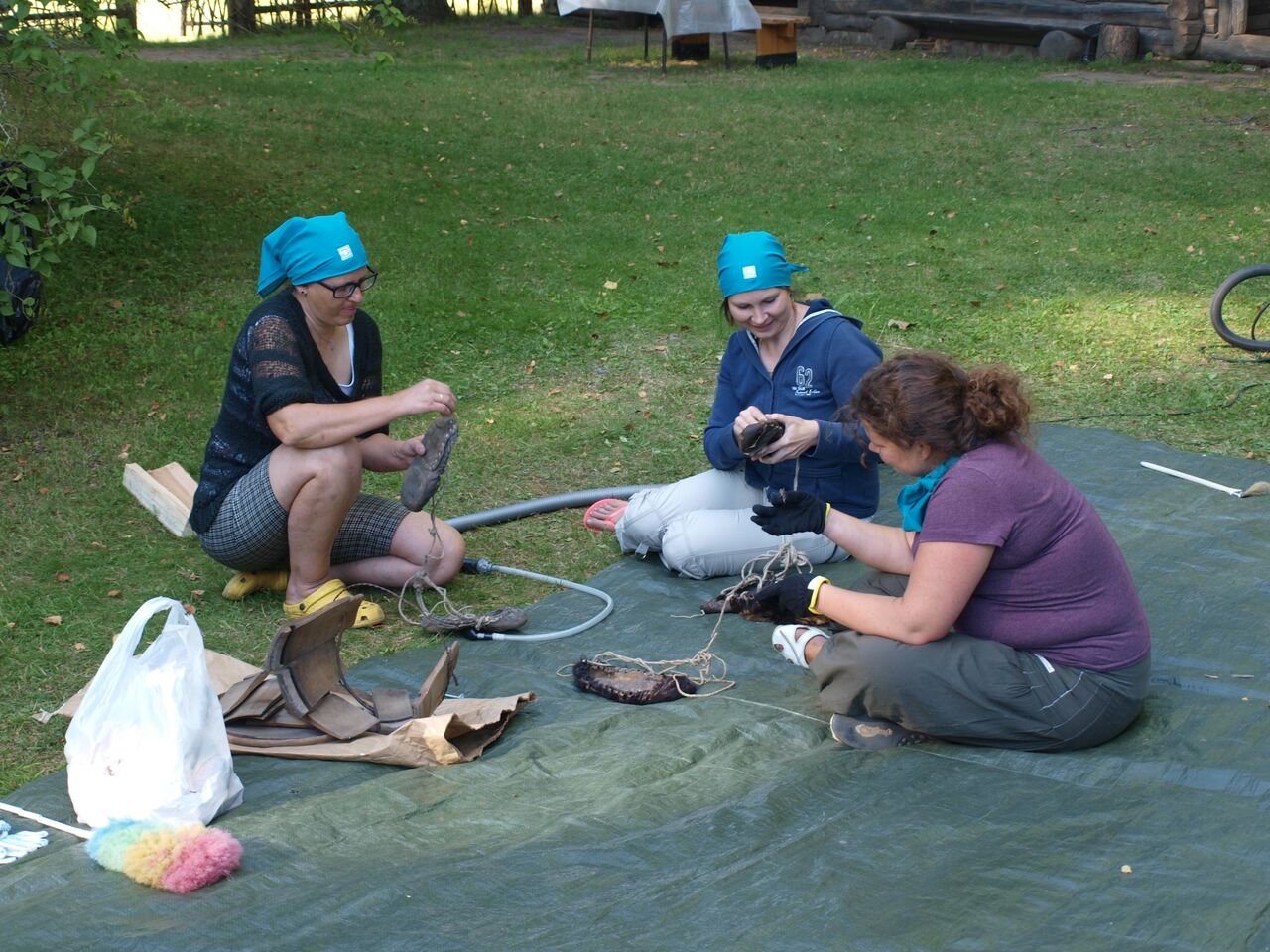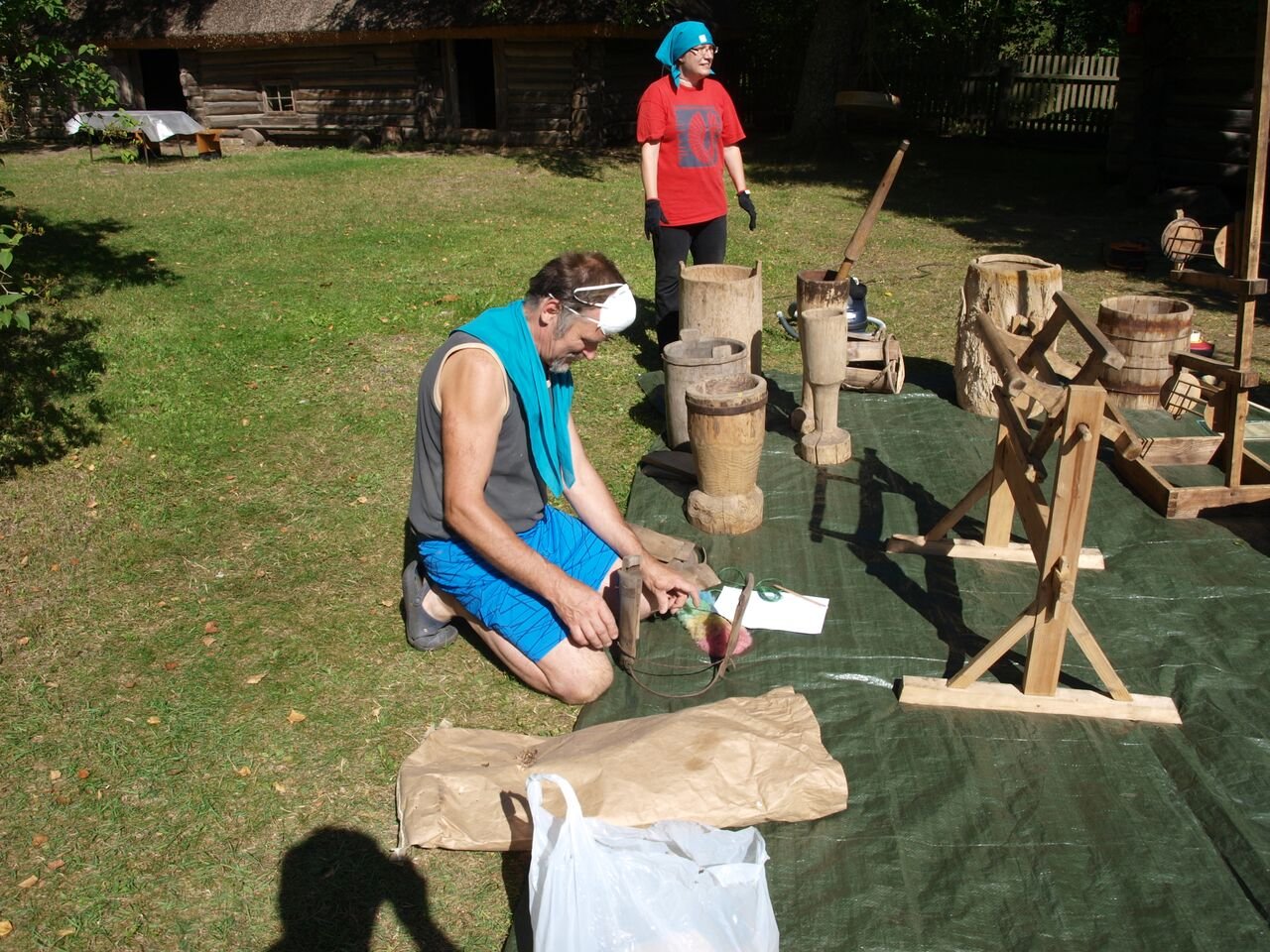INFORMATION ECOLOGICAL PERSPECTIVE ON THE CONSERVATION PROCESS
Autor:
Kurmo Konsa
Year:
Anno 2015
Category:
Preservation
This article first and foremost looks at conservation as a process which has the aim of preserving the value and meanings of cultural heritage objects and guaranteeing their usability. I am treating the conservation process in the framework of informational ecology, mostly proceeding from the ideas of Nard and O’Day. Information ecology is a system of people, practices, values and technologies in a specific local environment. Information ecological system is a network of a group of people and their tools and activities. The information ecological approach is characterised by systematicity, diversity, coevolution and locality. All these aspects are also very important in case of conservation.
Preservation of objects depends on the values and meanings attributed to them. The ultimate aim of preservation is to preserve the values of the objects, phenomena, and places which make them part of cultural heritage. Naturally this also includes preserving the structural information of objects but e.g. in case of buildings, it might also include preserving the surrounding information, certain ways they are being used, ideas related to an object, etc. Everything depends on the nature of the values that are being preserved and the information to which the values are related to in objects. In case of conservation it entails a social process the aim of which is to ensure the preservation of values by directly influencing the objects. The aim of conservation is to stabilise the condition of the elements that carry the object values.
The exact nature of the conservation process depends on the object, its context and the processing aims. The general principles of conservation process are usually similar, regardless of the different nature of objects. The specific emphases in a conservation process are largely dependent on the conservation theoretical approaches. Depending on what they concentrate on, these can be divided into object-, value-and human-based. With the object-based approach, the focal point of the conservation process is the object itself. What is done with the object is first and foremost dependent on its condition and possible damage. At first it might seem that a condition of an item or a building is a so-called objective state, subject to natural scientific analyses. In reality, the situation is a little bit different. Determining the condition presumes decisions that are all affected by the context and relations to the function, aim and usage of the object. Approximately 20–30 years ago, the questions relating to heritage value started to emerge and the approach emphasising the values is called value-based conservation. The significance of objects actually lies in values and meanings that people relate them to. Objects or phenomena are considered to be part of heritage only if there have been certain values attributed to them. The decision processes related to conservation are led by experts but also other interested parties are included, such as local people, artists, creators, owners and users of heritage objects, museum staff, other conservators etc. Such value-based approach has become wide-spread in the field of conservation. The physical integrity of objects is still the central focus of the process but the cultural significance of objects is also taken into consideration. Human-based approach to conservation ties the conservation process with the impact it has on people. What is in the focus is no longer the material object as the carrier of values but the community who attributes the values to the object. The entire conservation process is led by the welfare of contemporary communities, and preserving and shaping of values. Before starting with conservation of a building or any other heritage object, it needs to be considered what kind of understanding the interested parties and communities related to the object have regarding the object and the values related to the object. Such approach recognises the local, subjective and political nature of conservation. What useful ideas could be gained from information ecology in order to tie conservation processes to the society more tightly? To summarise information ecological perspective of the conservation situation, the importance of systematised approach should be emphasised. According to the traditional conservation model, the actual world (object) is interpreted by the conservator by using scientific methods. After that the object is altered and later interpreted by the user. It is an objective model which is free of subjective and personalised approach. In case of a more complicated and personified model, every participant has their own world view in the process, which includes intellectual, philosophical, experiential and social aspects, which are related to the everyday life and experiences of a person. The world view of different individuals, fields of life and establishments is different. Depending on the different world views, the ways how objects are sensed and interpreted also vary. The objects, in turn, affect people, and by conserving different objects, we continue to learn something and develop our knowledge and skills. This means that the world views of people are constantly changing and developing. This makes it impossible to require only objective conservation rules or situations. The opinions, convictions, and experiences of the process participants affect the conservation decision. Such a model rather reflects a subjective interpretation than an objective explanation. Conservators, owners and users of objects, and also the wider public, to name only a few parties, make up an integral system. Of course, different parties are bound to perceive this system differently; on the one hand it cannot be avoided but on the other hand it is an obstacle that really needs to be overcome. A significant factor that needs to be emphasised here is also the locality and uniqueness of heritage. Each heritage object and phenomenon is located in a specific environment and inseparably connected to it. Heritage is specific to a society and political in its nature. We cannot remove heritage administration from its social and political environment. In conservation, it is important to consider the views, goals and expectations of the community and the society where the heritage is located. It is definitely also necessary to include as many interested parties in the conservation process as possible. Relatedness to public and the support of the society are essential conditions for the successful long-term preservation of heritage and for the development of the field of conservation.
Conservation is changing from mere technical processing of objects into creating and recreating culture. What matters is not only what is achieved by conservation but also how this is done and how it influences people. A conservator selects objects and conserves one of the possible futures. The one that should be selected is the one where people feel good living in.
REFERENCES:
Nardi, Bonnie, O’Day, Vicki. 1999. Information Ecologies: Using Technology with Heart. Cambridge: The MIT Press.
Sully, Dean. 2013. Conservation Theory and Practice: Materials, Values, and People in Heritage Conservation. – The International Handbooks of Museum Studies, First Edition. General Editors: Sharon Macdonald and Helen Rees Leahy. Volume IV: Practice. Edited by Conal McCarthy, 1–21.
Appelbaum, Barbara. 2007. Conservation Treatment Methodology. Oxford: Butterworth-Heinemann.
Smith, Laurajane. 2006. Uses of Heritage. London, New York: Routledge.
Clark, Kate.1999. Conservation Plans in Action: Proceedings of the Oxford Conference. English Heritage.
Sully, Dean, Cardoso, Isabel. 2014. Painting Hinemihi by numbers: Peoples-based conservation and the paint analysis of Hinemihi’s carvings. – Studies in Conservation, 59, 3, 180-193.
Konsa, Kurmo 2013. Milleks meile pärand? – Akadeemia, 12, lk 2171–2189.



